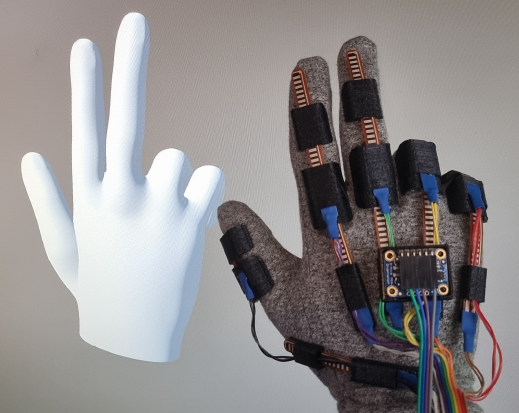
Sensor gloves are gaining importance in tracking hand and finger movements in virtual reality applications as well as in scientific research. In this project, we developed a low-budget, yet accurate sensor glove system that uses flex sensors for fast and efficient motion tracking.
The contributions are ROS Interfaces, simulation models as well as motion modeling approaches.
GitHub Code & Links
- https://github.com/ai-lab-science/SensorGloves
- The software development is part of the TRAIN project.
- The development is based on prior sensor glove designs.
Details to the Software Development

The figure shows a simplified schematic diagram of the system architecture for our sensor glove design:
(a) Glove layout with sensor placements, the orange fields denote the flex sensors, while the IMU is marked as a green rectangle,
(b) Circuit board which is wired with the sensor glove, has 10 voltage dividers for reading each flex sensor connected to ADC pins of the microcontoller ESP32-S2 and the IMU is connected to I2C pins,
(c) The ESP32-S2 sends the raw data via WiFi as ROS messages to the computer, which allows a real-time visualization in Unity or Gazebo,
(d) Post-processing of the recorded data, e.g. learning probabilistic movement models and searching for similarities.
Publications
A research publication by Robin Denz, Rabia Demirci, M. Ege Cansev, Adna Bliek, Philipp Beckerle, Elmar Rueckert and Nils Rottmann is currently under review.

